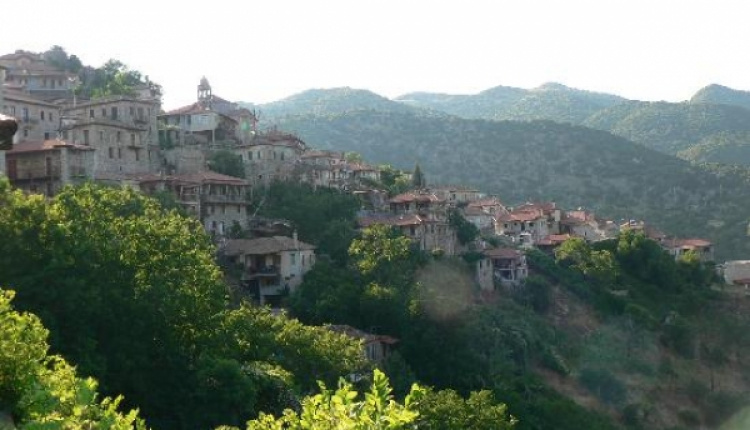Arcadia
- by XpatAthens
- Wednesday, 18 February 2015

In agriculture, potato farms (dominant in central and north-central Arcadia), mixed farming, olive groves, and pasture dominate the plains of Arcadia, especially in the area around Megalopolis and between Tripoli and Levidi.
Towns & Sights
Tripoli, the capital of the prefecture, is built at a height of 665m. It is the commercial and cultural center of Arkadia. Modern Tripolis was created in 1770 near the ruins of the ancient cities of Pallantron, Tegea, and Mantinea, hence its name 'Tripolis' = 'three cities', presumably chosen to explain the medieval name. Before the Greek Revolution, it had a large Muslim and Jewish population, but also served as the central point for Ottoman occupation and rule over Greece. Today it is the seat of the recently founded University of the Peloponnese with two departments of the Sciences and Technology School and one department of the Economics and Administration School.
Astros is a breathtaking town by the sea built upon a hill called the " To Nissi " An open theater is operating there during the summer months. There is also a sailing school for adults and children and the harbor full of little sailing boats is a sight to behold.
The town is also home to the Astros Archaeological Museum, founded in 1985. The museum contains mostly ceramics from cemeteries dating back to the Hellenistic period, architectural parts of the villa of Herodes Atticus at Eva Dolianon, and small coins, inscriptions and pieces from Kynouria.
Dimitsana has been characterized as a traditional village with its tall stone houses and churches. Dimitsana stands at an altitude of 960-1080m on the ruins of the ancient town of Tefthis. Don 't forget to visit the six gunpowder mills, the houses of Patriarch Grigorios the 5th and Bishop Palaion Patron Germanou, as well as the Museum of “hydrokinetic”.
Vytina is situated on the firry Mount Menalo (44km from Tripoli) and on an altitude of 1033m. It is a place with a majestic view and healthy climate that gathers many vacationers and visitors throughout the year. Much of the houses were stone built until the 1960s. Electricity arrived in the same year. Vehicles arrived in the 1970s, the pavement of the main road and television arrived in the 1980s and computer and internet are rarely known in the beginning of the 21st century and up to date technology is not seen.
In the wintertime, snow-covered Vytina offers a unique and astonishing sight.
Lagkadia is a very picturesque Arcadian town. Situated on a mountainous august landscape with fresh water springs, it offers an imposing sight to every visitor. The two and three storey stone houses that are amphitheatrically built on a steep slope create the impression of a stone-built work of art. The Central Square of the village stands on the edge of a deep ravine rich in walnut trees, plane trees and fresh water streams. At this point Thoa canyon begins and stretches crossing a big part of Gortynia and eventually ending up at river Ladona. Lagkadia is also known for its developed local weaving mill handicraft.
Megalopoli is a town in the western part of the prefecture of Arcadia. It is located in the same site as ancient Megalopolis. "Megalopolis" is a Greek word for Great city. When it was founded, in 371 BC, it was the first urbanization in rustic and primitive Arcadia. Megalopolis is famous for its ancient ruins situated northwest, which include an ancient theatre that used to hold up to 20,000 people and was 30 m tall. Other landmarks include the Thersileon with 67 pillars and a temple.
Stemnitsa is considered one of the most beautiful villages in Arcadia. The village's name comes from a Slavic word meaning "a thick forest shaded with trees". It has a folklore museum which includes various exhibitions regarding the traditional way of Stemnitsa life in the past including how candles were made, a jeweler's workshop, a shoe repair shop and a copper tinning representation. It also houses an extensive selection of Byzantine icons, old costumes, copper- ware, guns and jewelry.
Seven kilometers from Stemnitsa, down by the ravine of the river Lousios one can find the monastery of St. John the Forerunner (Prodromos) built, according to some sources, around 1167, on the side of the mountain rock. It served as a center of faith and education for the enslaved Greeks during the Ottoman rule.
Source: Peloponnesetravel.com


